If you’ve already seen the film, there’s a more in-depth, spoiler-filled version available here.
It’s here. Christopher Nolan has defied the law of superhero trilogies, which seemed so natural that it was akin to gravity. The Dark Knight Rises might not be the perfect piece of cinema, but it does perfectly wrap up Nolan’s Dark Knight trilogy, with enough grace, wit and intelligence to avoid the problems that faced other superhero threequels. While it falls a little short of The Dark Knight, mainly because of what it lacks rather than what it fails at, The Dark Knight Rises manages to make some telling observations about its central character, while proving an epic for our time.
The Dark Knight was the best mainstream film to explore the War on Terror, and The Dark Knight Rises might be the best movie about the social implications of the current economic strife – the philosophy of the “1%.” Finding a way to handle both the political allegory and the central character’s myth in under three hours is no small accomplishment, and Christopher Nolan once again demonstrates why he’s one of the best directors working today. Nobody blends blockbuster scale and aesthetic with sophistication and suspense nearly as well as Nolan.
Note: There will be some spoilers in this review. I won’t summarise the plot, but I will discuss some plot points. I won’t spoil any twists, but I may quote some dialogue. Don’t worry, I’ll warn you when I’m digging into the story itself below.
Nolan has that rare ability to blend pulp entertainment with more high-brow pursuits. This occasionally backfires when fans of either attack him for attempting to have it both ways – fans protesting that he’s “hijacking” the character to insert his own literary ideas, or elitists complaining about the director “lowering himself” to genre fare. I don’t find either criticism especially fair. I think Nolan serves the character of Batman and his world especially well, but that doesn’t mean that Batman is somehow “beneath” social commentary or political analysis.
Nolan has an uncanny ability to be literate and yet accessible, challenging and yet accessible, efficient and yet innovative. In The Dark Knight Rises you can see a whole host of influences. Nolan draws from the comic book fare (Knightfall and No Man’s Land in particular), but also from the current political climate, and even from Charles Dickens’ A Tale of Two Cities. All these influences and ideas are well served by the director, and none jostle against each other. I can’t imagine how difficult it would be to construct a blockbuster around any of these, and yet Nolan proves capable of synthesising all these elements into one hugely satisfying whole.
There’s a lot to digest here. It’s hard to imagine, without spoiling anything, but The Dark Knight Rises is even bigger in scale than The Dark Knight. In The Dark Knight, the Batman fought the Joker for “Gotham’s soul.” Here, the stakes are even greater. “Welcome to the future of Western civilisation,” Bane triumphantly boasts at one point, and Batman finds himself facing a problem on a scale that makes even The Avengers look small in comparison. Bonus points to Nolan for ensuring that Batman can’t defeat the problem by punching it really hard.
The first half of The Dark Knight Rises roars along. It’s telling that a movie approaching three hours in length can still feel a bit rushed in places. I can’t help but feel like the film could have used a tiny bit more room to breath – although wanting more of a film this size is almost certainly a good thing. I have, of course, only seen it once. I will rectify that, but I get a sense that there will be much to digest and discuss in on watching the film again. In particular, I’m already contemplating a massive marathon of the trilogy. I can see the films fitting together rather well.
Much as The Dark Knight effectively picked up the ball from Batman Begins and carried it down the pitch, The Dark Knight Returns feels like a logical continuation and development of the ideas Nolan developed and suggested in The Dark Knight. It’s telling that so much of the film is anchored directly in its predecessor. Nolan apparently once stated that he never held anything back from the other two films – each had to stand on their own and each got everything that he had. He never “saved” anything for the follow-up. If that’s true, it makes the way these three films fit together even more impressive in hindsight.
There are, of course, a few seams in the transition. The movie is centred around the legacy of The Dark Knight. Rachel Dawes and Harvey Dent are both repeatedly referenced, and both play very major roles in the plot – Dawes as a motivator for Bruce Wayne, and Dent for Gotham. As such, the Joker is conspicuous by his absence. It’s entirely understandable that the character isn’t present, as it would have been foolish to recast. However, the name is never even mentioned. He feels conspicuous by his absence, even though it’s perfectly rational and logical that Nolan and his crew would not want to touch the character. Even a throw-away line or reference might have been nice.
Which brings us to what the film lacks. It continues the themes and ideas of The Dark Knight perfectly. Nolan is still a phenomenal action director, and the set-pieces are stunning. The ensemble is as pitch perfect as it was back in Batman Begins. However, there isn’t a performance or a character here who serves as a lightning rod to bring all into the same perfect harmony as The Dark Knight. Anne Hathaway is great as Selina Kyle. Tom Hardy is wonderful as Bane. Neither performer (nor their character) is as perfectly overwhelming as Ledger’s Joker. Ledger’s Joker stole the show from a powerhouse ensemble.
Here, the ensemble is every bit as good, with any number of impressive additions, but there just isn’t that same focal point. That isn’t to suggest that any individual element is weak. I think they’re all wonderfully strong and everybody acquits themselves superbly. Marion Cotillard and Joseph Gordon Levitt both work well in supporting roles, and it’s great to see Matthew Modine even in a small role. Selina Kyle is a solid character, and Bane is almost the perfect foil for Batman.
There’s just not that little extra edge to push the movie that tiny bit further, to make it just that little bit better. That sounds like a harsh criticism, but it’s not really. I think that The Dark Knight Rises is as well put together as its direct predecessor, which makes it significantly better than any modern blockbuster. I just suspect that it might not have the same focal point for critical and audience appreciation.
What The Dark Knight Rises has that its predecessors didn’t, and what sets it apart from the bulk of Hollywood franchise fare, making it something truly special… is an ending. Most big movies end with a sequel hook, the promise that patrons can put down more money for another story featuring that character in a few summers. It’s something that comic book characters are especially prone to, do their nature as serial adventurers. They have to keep getting published so they can keep earning movies, just as movies have to keep getting made to make money.
This lack of an ending prevents closure, and I think it leads franchises to become stale. There’s always the dreaded status quo that must be maintained for marketability. Even master scribe Alan Moore has conceded that this nature of perpetual storytelling, defying these characters of an ending, is one of the things holding back the superhero genre. He wrote in his introduction to Frank Miller’s The Dark Knight Returns:
All of our best and oldest legends recognize that time passes and that people grow old and die. The legend of Robin Hood would not be complete without the final blind arrow shot to determine the site of his grave. The Norse Legends would lose much of their power were it not for the knowledge of an eventual Ragnarek, as would the story of Davy Crockett without the existence of an Alamo. In comic books, however, given the commercial fact that a given character will still have to sell to a given audience in ten years’ time, these elements are missing. The characters remain in the perpetual limbo of their mid-to-late twenties, and the presence of death in their world is at best a temporary and reversible phenomenon.
Nolan has dared to provide an ending here. I can’t tell you what it is. That would spoil it. I can’t tell you if it’s happy or sad, hopeful or cruel, bitter or optimistic, ironic or triumphant. I can tell you, and must tell you, that it is there.
The Dark Knight Rises is an ending. It’s a full stop. It means that Batman’s character arc – and the character arc of those around him – means something. It means that Nolan isn’t just spinning his wheels. It means that there is a bit of weight to the film. There’s more suspense here than I think I’ve seen in any blockbuster for a while. Batman’s fate is up in the air, and so is Gordon’s. So is Alfred’s. It’s an element of risk that is often missing from these films, and it’s to Nolan’s credit that it’s present in almost every frame of The Dark Knight Rises. We don’t know who will live and who will die, which makes the movie all the more effective than it would be otherwise.
And no we’re going to talk about the characters and the story. These could be considered spoilers. I won’t give away the ending, or ruin any big moments, but if you want to see it blind, and I recommend you should, leave now. But favourite this page and come back after you’ve seen the film. Or if you don’t mind knowing a bit before you go in.
While the Joker is conspicuously absent, Ra’s Al Ghul is conspicuously present. His name is dropped repeatedly. Bane is positioned as the heir to Ra’s Al Ghul (“I am the League of Shadows!”), further cementing himself as a counterpart to Batman. In many ways, The Dark Knight Rises feels like a full circle back from Batman Begins. While its themes are more strongly developed from The Dark Knight, there’s a sense that Nolan is taking the story back to its roots.
It’s also worth conceding that The Dark Knight Rises is the most conspicuously fantastic of Nolan’s Batman films. The Dark Knight was firmly grounded, with the Joker taking control of Gotham using nothing but knives and gasoline. While Batman Begins featured a macguffin in the form of a microwave emitter and a healthy fear toxin, it was also relatively grounded. Here, on the other hand, Nolan’s film feels gleefully “comic book”-y.
There’s even an alternate energy source that would make Tony Stark blush, along with suspiciously fast recover times from what should be fatal injuries. The movie’s second and third acts require a major amount of suspension of disbelief from any sort of “realistic” perspective, but Nolan is skilled enough to make it work. The movie doesn’t seem is firmly grounded in the “real” world as The Dark Knight did, with Batman even going globe trotting, but that’s not necessarily a bad thing.
I actually quite liked it – I like the idea of the world of Batman developing into a more fantastic place, even if it’s still firmly rooted in the real world. Perhaps the crisis that grips Gotham seems a little bit too outlandish, but it’s still thematically grounded in the Joker’s crime spree from The Dark Knight. One imagines that he’d look at what Bane did to Gotham, and he’d laugh with manic glee. In fact, I think the movie works so very well because despite the fantastic nature of what is occurring, it’s all grounded in the same basic moral philosophy of The Dark Knight and Batman Begins, just on a larger scale.
Ironically, given his appearance, Nolan’s Batman has always been about hope. The forces that rise up against him have always been opposed to that. Ra’s Al Ghul, the Joker and now Bane all believe in the worst of people. All three believed that man is basically savage. If you remove the constraints of civilisation and society from a people, they become animalistic. Bane’s “social experiment” is just much vaster than the Joker’s.
Bane claims that he and the League of Shadows have arrived in Gotham as “liberators; to return control of Gotham to the people.” Cut off from the outside world, with infrastructure disabled and the police force removed from the equation, Bane has literally removed the shackles of civilisation from the people of Gotham. “Do as you please,” Bane advises the citizens, hoping to turn them loose, that they’ll become nothing more than a pack of rabid dogs.
The political implications are obvious. Batman has always dealt with elements of class. He’s a rich person who puts on a fancy dress costume to beat up criminals. Bob Kane’s original Batman stories frequently featured rich people in mansions, with poor people relegated to playing thugs or goons. It’s been tackled and played with over the years (most notably by Alan Grant), but it’s also been a strong thematic element in Nolan’s take on the character. Nolan’s Batman rather pointedly spent years in poverty and anonymity to understand economic suffering so as to temper his attitudes to crime. In The Dark Knight, the Joker doesn’t need money to cause anarchy, operating on a shoestring budget in contrast to Batman’s millions.
So it’s no surprise that class plays a pretty major role in The Dark Knight Rises. A wealthy citizen of Gotham, named Daggett, seeks to treat Bane as nothing more than a hired gun, assuming that his money gives him leverage over the terrorist. Bane, rather brutally, dismisses the idea. “This gives you power over me?” Bane mockingly asks the executive. When Selina is hired by Daggett to do a job, it’s very clear that she’s hired because her social status makes her expendable. “No one’s going to miss you.”
In fact, when Bruce calls Selina out, she dismisses him – arguing that he has no idea what he’s talking about. “You don’t get to judge,” she warns him. If the Joker’s imagery was associated with dogs (“I’m a dog chasing cars” and “we’ll see just how loyal a hungry dog is”), then Bane is associated with the underclass. Literally. He lives in the sewers with an entire underclass of people. He lived underground his entire life. His plans to destroy Gotham are literally mixed into the foundations of the buildings are town. His agents are janitors and shoe-shiners, people that the wealthy wouldn’t look at twice. Batman was born to wealth and class. Selina and Bane were born to neither.
So it’s telling that the first attacks in Bane’s “new Gotham” are very clearly directed towards the wealthy, dragged from their beds and brought before kangaroo courts convened by lunatics. It’s the redistribution of wealth, with the laws that protected the “1%” no longer enforced. Far from an idealised utopia, it creates a savage world where force is the only currency that matters. “This used to be somebody’s home,” Selina remarks mournfully. Her friend responds, “Now this is everybody’s home.” Vive la revolution!
It gives the movie a decidedly political edge, to complement the commentary in The Dark Knight about the War on Terror. In fact, Nolan does a rather excellent job exploring that theme here as well. It seems like Nolan might have been a little too concerned about a neo-conservative reading of The Dark Knight, where Batman was seen as a stand-in for President Bush, impugning liberty for the greater good – conducting wire-taps and extraordinary rendition, while lying to his people for their own good.
Nolan’s Batman trilogy has always been about consequences, and that’s very much the case here. Nolan turns that political reading on its head and reverses it dramatically. Batman ran his own extraordinary rendition from Hong Kong in The Dark Knight. Here, Batman is a victim of the tactic, dragged off to an anonymous hell-hole on the other side of the world to torture. (“Not of your body,” Bane clarifies. “Of your soul.”)
By his very nature, Batman assumes moral authority in Gotham without any legitimate mandate to do so. Bane does the same here – he brands his band of goons “liberators” of the great city – a rather uncomfortable inversion of the portrayal of the Joker in The Dark Knight as a “terrorist.” In The Dark Knight, Alfred lied to Bruce about Rachel in order to give him the strength to endure. Here, Alfred finds that the lie has only caused more harm. At one point, Alfred begs Bruce to let the truth come out, instead of continuing to try “to outsmart it.”
The Dark Knight Rises is about consequences. And not just from The Dark Knight, although it’s a major part of it. Harvey Dent’s heroic legacy is a lie, but a lie that held the city together. What happens when you remove that? We’re told early on that Commissioner Gordon has been falling apart. His wife moved to Cleveland with the kids. He seems to want to tell the truth, and is crushed by the lie. Bane uses that, rather pointedly. That’s the problem with a lie – it turns the truth into a weapon. Then again, The Dark Knight Rises quite likes the idea of something good being corrupted into something terrible.
However, and I really like this, it’s interesting to see Batman held to account for something even earlier than that. At the end of Batman Begins, Bruce left Ra’s Al Ghul to die. Here, is explicitly and bluntly called out on it. “You murdered him,” Ra’s heir accuses Bruce, and Bruce doesn’t deny it either. It’s implied that his decision to kill Ra’s is in some small way related to everything that happens in The Dark Knight Rises. It’s a nice touch, because it thematically ties into the idea that Bruce is evolving, learning and making mistakes. His decision to let Ra’s die was a mistake. That was implied by his decision to save the Joker at the climax of The Dark Knight and made explicit by the consequences seen here.
In fact, I like the idea that Ra’s death plays such a key role here. The Dark Knight Rises deals with the idea that something good can easily be perverted. A lie for the greater good can be come a weapon. A source of unlimited power can become a gigantic bomb. Lucius Fox takes great care of Bruce’s toys “to keep them from falling into the wrong hands”, but the trailers reveal that they do. Even hope is turned into a weapon by Bane. That’s the worst part of the prison where he was held – the constant hope of escape, even though it was practically impossible.
So it’s fitting that Bruce finds himself opposed by the Bane, the spiritual successor and heir apparent to the man he killed. The movie’s central villain has an origin that mirrors Bruce’s as Batman, albeit perverted and inverted. Bruce murdered Ra’s, much like his own parents were killed, and thus created his own counterpart. A counterpart who waited, trained and learned, much like Bruce did – “the knife that waits years without forgetting.” “My father’s work is done,” either the hero or the villain boasts towards the end of the film. I won’t tell you which one – but it makes the point that Bruce faces an enemy here who is basically himself perverted.
That’s the key here, and I think one of the themes of Nolan’s trilogy. These things are all tools. These elements aren’t inherently good or bad – it’s how they are used and people who use them. Even Bruce’s life could have been perverted to produce a sinister supervillain. Even Batman himself is a tool that can be used for good or for ill. All that matters is what people do with that. Bruce is a decent person, who puts his past, his wealth and Batman to good use. In the end, it comes down to people themselves to use these tools, rather than relying on them. As Gordon watches Gotham burn, he can see that it’s up to the city to save itself. “This only gets fixed from inside the city.”
Bruce explains at one point why he worn a mask. It was to protect the ones he loved, but also to send a message. “Batman can be anybody,” he confesses. “That was the point.” Batman is, after all, bigger than Bruce. He’s an idea. He can, as Alfred argued, endure. Batman’s actually on screen from remarkably little of the film, but his symbol is ubiquitous. While the cape and cowl might be absent, his presence is definitely felt. Primitive Bat symbols are etched in chalk around Gotham, like memorials to a fallen soldier. At one point, Bane discovers just how strong that symbol is, and the damage it can withstand.
“Impossible!” Bane declares as he realises that a little physical violence can’t destroy a legend or a myth. Batman is bigger than just Bruce. He’s a concept, an idea. He’s more than the flesh and blood and fancy gadgets. I think that’s one of the things I like about Nolan’s films – just how clearly they focus on Batman as an idea that is, to quote Ra’s Al Ghul, “more than just a man.” In a way, The Dark Knight Rises sees Ra’s quote to Bruce rung true – it sees his observation in Batman Begins play itself out.
And that, of course, is where Bane comes into it. I think that Nolan has crafted pretty much the perfect version of Bane, an iteration of the character who is perhaps the best that the villain could ever be. Bane isn’t just a goon in a silly mask, as he was in Batman & Robin or even in Batman: The Animated Series. Instead, he’s developed as a character who exists in dynamic opposition to Bruce. Nolan takes the best aspects of the character and improves upon them.
He’s defined as the very opposite of Batman, right down to him mask. Batman’s mask covers all of his face except his mouth. Bane’s mask pretty much only covers his mouth. Bane even operates using technology appropriated from Batman. The sewers are pretty much Bane’s Batcave, and the character’s modus operandi is constructed to compliment Batman. He’s a planner, much like Bruce.
However, Nolan takes it much further than that. We’re told that Bane grew up in a prison, like his comic book counterpart. However, the best part of this is the design. Bane’s prison is designed to evoke the well from Batman Begins – the hole through which Bruce found the bats that would inspire him. Discussing the origins of Bane, Alfred comments, “Sometimes a man rises from the darkness. Sometimes the pit sends something back.” In many ways, the cave underneath Wayne Manor served a similar purpose, sending back the idea for Batman, implanted deep in Wayne’s subconscious.
Much like Bruce, Bane has ascended to the status of legend. Bruce is told the story of how one prisoner managed to escape the hellish pit of a prison, but the storyteller dismisses it as “an old myth, nothing more.” Bane perfectly mirror’s the Batman half of Bruce Wayne, with his mask literally serving to numb the massive pain that he feels. We’re told that Bane is in “constant agony” underneath it. His pain might be more literal than Bruce’s existential rage, but for both characters “the mask holds the pain at bay.”
It’s possible to argue that Bane is counterpart to Batman, but without the Bruce Wayne persona. At the start of the film, the Mayor of Gotham refers to Batman as “a murderous thug in a mask”, and that’s pretty much what Bane is. Bane doesn’t have a life outside the mask, and is incapable of taking it off without being in severe pain. The person behind the mask is never named, and is of little importance. Even Bane himself concedes, “Nobody cared who I was until I put on the mask.”
Given how so much of The Dark Knight Rises explores what Bruce Wayne is without Batman, it’s a very effective mirror for the character and I think that Bane is the perfect counterpoint to Bruce in this film. Bane is pretty much Batman thrown back against Batman, but without any of the humanity and compassion. Bruce sincerely hopes that he can use Batman might make the world a better place, but Bane lacks that.
While the Joker firmly rejected Batman’s optimistic world view, Bane actually acknowledges it, to a point. The Joker could never understand Bruce’s faith in humanity, while Bane understands it perfectly. He just doesn’t think it can ever be realised – hope is a weakness. To Bane, hope is just that bright light you can never actually reach, teasing and tempting you. To Bane, hope is only useful as a tool to understand despair. Without hope, despair cannot truly exist.
I really liked Tom Hardy as Bane. While the character doesn’t get to steal the show in the same way the Joker did, Hardy has a great deal of fun. He seems to be consciously and anxiously flexing his muscles, as if waiting for something to happen – for the mayhem to start. “Let the games begin!” he warns Gotham, gleefully. There are wonderfully weird moments of humanity glimpsed beneath the character’s cold demeanour. As he listens to the national anthem before a terrorist attack, he sincerely notes, “That’s a lovely, lovely voice.” When he takes control of the Gotham Stock Exchange, he even gives a curt nod to one of the hostages.
Bane fits in quite well, much better than I honestly thought the character would. While the Joker proved a philosophical and intellectual challenge to Batman, Bane is instead a character how can’t be defeated by Batman’s physicality. In their first confrontation, Batman hammers Bane with everything he has, and Bane barely flinches. Even Batman’s usual tricks are completely useless. “Theatricality and deception,” Bane notes. “Powerful agents to the uninitiated.” Basically, Bane is a character who exists to counter Batman’s strength and tactics. He’s a more hardcore version of the hero. “You merely adopted the dark. I was born to it.”
An Nolan actually uses the character to the best degree possible. Bane was famously invented for one purpose and one purpose only: to break Batman. Both mentally and physically. Here, Nolan even manages to extend that a little bit further as Bane not only breaks Batman, but makes sure that Bruce is both broke and broken by his systemic attacks. I really think that Nolan has managed to craft the best version of this relatively recent creation, and I think that the character actually fits Nolan’s story perfectly. It’s interesting that Nolan has always found the right characters to use, no matter when they were created or which era they belonged to.
That said, Bane is really just a device here, just as Ra’s Al Ghul was in Batman Begins. The both exist to challenge Bruce, who is a far more important character in this trilogy than he has been in any other live action adaptation. The Joker, of course, did the same in The Dark Knight, but he stole the show in a way that Bane and Ra’s don’t quite. Much like in Batman Begins, Bruce is very much the central character here, and Nolan makes it clear that while the character has the best intentions and the right idea, he’s not necessarily the healthiest of specimens.
We’re introduced to a version of Bruce Wayne who has retired from being Batman. In many ways, that retirement is quite like the one in Frank Miller’s The Dark Knight Returns, which was a heavily influence here. (Appropriately, Miller’s Year One can be seen as an influence on Batman Begins.) Bruce has become a shut-in. He hosts fancy fund raisers on his property, but never turns out, still hiding in the shadows, a figure barely there. He has a “practised apathy.”
Ironically, this seems to evoke rumours that Christopher Nolan was going to make a Howard Hughes bio-pic, as Wayne becomes exactly that sort of eccentric shut-in, with characters joking about him “peeing into Mason jars.” There’s a sense that Bruce wants to minimise human contact. When a member of the help makes off with a priceless heirloom (which is a nice nod to the Batman mythos, and ties back to Bruce’s origin), Bruce warns Alfred, “Maybe you should stop letting them in this wing of the house.”
There’s a sense that Bruce is still Batman, even if he hung up his cape and cowl a long time ago. Even though it’s implied he hasn’t dressed up as Batman since the events of The Dark Knight, he still builds and maintains a Batcave on the grounds of Wayne Manor. He still practices archery. He refuses to get back in the world, despite Alfred’s urging, lamenting, “There’s nothing out there for me.” Even Alfred holds out little hope for Bruce. Early in the adventure, the faithful butler accuses his young ward, “You only see one end to your journey.”
Caine is fantastic as Alfred, and The Dark Knight Rises picks up his character arc where Batman Begins left off. There’s a sense that he’s a character who really tried to take care of Bruce after his parents dies, but proved singularly unable to. In one gut-wretching scene, Alfred begs his old friends to forgive him for what he sees as his failure to guide Bruce to a healthier adulthood. “I’m so sorry, I failed you. You trusted me, and I failed you.” It’s Alfred who really serves as the emotional catalyst for The Dark Knight Rises, articulating the inevitable and inescapable conclusion of Bruce’s dangerous journey.
Nolan’s Batman films have always adopted a refreshingly amoral approach to the Caped Crusader. While explaining why Bruce would do what he does, Nolan has dared to ask whether or not it’s objectively the right thing – something superhero movies take for granted. Here, he suggests that Batman is an act of hubris on the part of Bruce, an example of the character’s arrogance. It’s telling that Bruce dismisses Bane as a threat as quickly as he dismissed the Joker. “Bane’s just a mercenary,”Bruce tells Alfred, recalling comments about how criminals aren’t complicated. And we all know how that ended up.
At another point, Bruce engages in an epic chase with Bane. The hot-shot would-be police commissioner decides to make his name by capturing Batman. The resulting chaos ensures that Bane manages to escape. When Alfred confronts Bruce about it, the millionaire responds, “The police weren’t getting it done.” Alfred counters with the idea that Batman might be causing more harm and confusion than he prevents. “Maybe they would have if you didn’t lead them on a merry chase.”
It’s interesting that The Dark Knight Rises sees Batman a lot more comfortable in his sexuality. Even his relationship with Rachel in Batman Begins and The Dark Knight was weirdly asexual (and unconsummated), an idealise romantic urge rather than any sort of sexual chemistry. The women that Bruce hung around with in those films were explicitly “beards” designed to draw attention away from his other nocturnal activities. I always thought that this was a nice way of symbolising Bruce’s emotional immaturity, suggesting that he never really grew up. Even some of his flirting with Selina seems like high school dialogue, as he inquires on behalf of his “powerful friend.”
And yet, despite that, this is perhaps the most sexual of Nolan’s films – perhaps suggesting that Bruce’s personality is maturing. Instead of devoting himself to the one girl he cannot get, Bruce finds himself actively courting and flirting with two girls. There’s the idealised Miranda Tate, and the kinky Selina Kyle. Both relationships are far more physical than anything between Bruce and Rachel. It’s a nice touch, and another way of suggesting that Bruce might be coming out of his shell, so to speak.
Bale is great here. He has always been superb, even when overshadowed by some of the other talents. This is his swansong role, and he’s absolutely perfect. Kevin Conroy might still be my favourite actor to play Batman, but Bale is my second favourite – and certainly my favourite in live action. It’s nice to see a movie centred around the character himself, rather than using him as a vehicle to showcase his louder and more distinguished opponents.
The entire ensemble is great. I love how Nolan built a family around Bruce. People get hung up on Robin, but Nolan’s version of Batman arguably has a far stronger circle of support than the comic version ever did. “We all just want what’s best for you,” Lucius assures him, and there’s no doubt of that. I think it’s great that Bruce developed as an orphan who found himself this strange and large family. Morgan Freeman is, it goes without saying, great as Fox again.
Gary Oldman does a great job as Commissioner Gordon. And I love that Nolan repeatedly gives these incredibly awesome little moments to Gordon – there are several stand-outs in the film that I don’t want to spoil, but I honestly find it hard to believe any mayor worth his salt would think of mothballing Gordon. There’s never a moment as perfectly Gordon as “we have to save Dent; I have to save Dent”, but there are some fantastic interactions. There’s also a wonderful sense in Gordon’s performance of a man barely holding it together.
I don’t want to spoil too much, so I’ll leave it there for now. But The Dark Knight Rises is easily the movie of the summer. It might lack a riveting focal point performance like that given by Heath Ledger, but it’s just as smart, sophisticated and well put together as its predecessor. It’s the perfect coda to one of the definitive explorations of Batman as a character. Christopher Nolan does himself, and the character, proud.
You might be interested in our reviews of the other films in Christopher Nolan’s Batman trilogy:
- Batman Begins
- The Dark Knight
- The Dark Knight Rises
Filed under: Non-Review Reviews | Tagged: bane, batman, batman begins, Charles Dickens, Christopher Nolan, dark knight, dark knight returns, Dark Knight Rises, Dark Knight [Blu-ray], film, joker, Joseph Gordon-Levitt, marion cotillard, Movie, nolan, non-review review, review |

























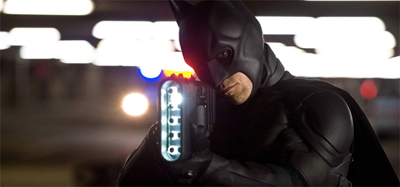
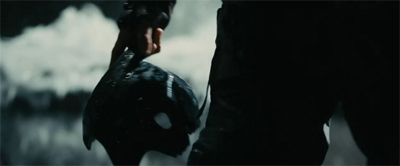
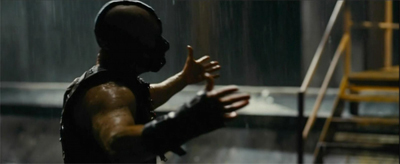

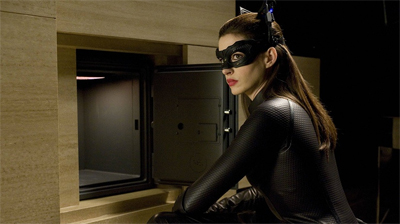


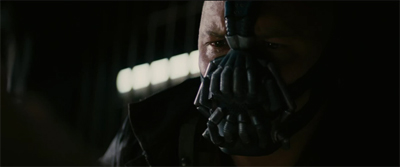

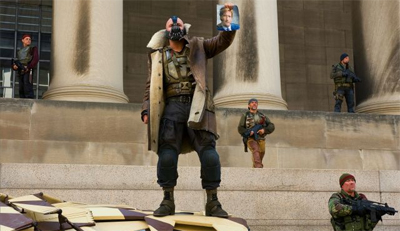


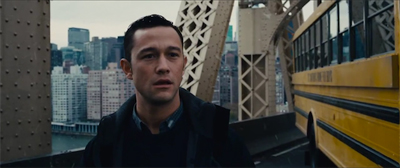



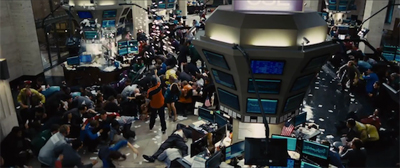






Bravo, Darren.
Thank you very much. Have to say, really looking forward to digging into it again. There’s a lot I think was set up earlier that I might have missed. And I can’t wait until it’s out so I can talk about the ending.
But I did really enjoy it.
Uh….I liked the bit where Batman punched Bane.
Seriously though, great read Darren, you took a lot from a single viewing!
I really liked the film, but as you say it lacked a Ledger… to its detriment I think. To me, Bane is just a henchman, he could be any entry in the rogues gallery really.
Although I did love his “and this gives you power over me?” query.
There are plenty of holes for the nitpickers (id love to discuss with you privately in the No Spoiler Zone :-)) and it is marginally repetitive (would people stop trying to blow Gotham up? kthnxbai) But overall it is a great watch, and like you I’m looking forward to a second helping.
Best achievement by far is how Nolan handled Selina Kyle – making an adult audience take other adults dressed as animals seriously is an achievement – Catwoman trickiest of all – but she is superb, thanx in no small part to hathaway. He even got the ears in!
My main gripe is not being able to understand three quarters of what Bane said. Seriously, cut a mouth hole in that mask, or something
Thanks Ross.
I plan to go back to edit it when it’s been out a week, so spoilers are fair game. I can see the review doubling in size. Even reading over it now, there’s a lot I missed. Particularly about Selina. Could have sworn I covered her. But Hathaway was great.
There’s a whole lot in the last half hour I want to talk about, particularly one of the things I really liked about Bane. (Which was something that Tim Burton did in Batman Returns that was very clever, and I don’t think too many people picked up on it.)
I actually understood him fine. Although some of it was quite cute rather than threatening. I love how his voice was half Heath Ledger’s Joker and half Liam Neeson’s Ra’s Al Ghul.
The Heath Ledger thing is the movie’s biggest problem, I think. Ledger’s Joker was the most zeitgeisty pop culture villain since Hannibal Lecter. Bane is… cool, but not the Joker.
Although I think a lot of Bane’s role was quintessentially Bane, as far as the character has been defined. I’m actually impressed that Nolan took a one trick pony and made him work perfectly. I can’t think of any generic Batman baddie who would have worked so well while still maintaining a lot of the great stuff. (The prison as a mirror to Bruce’s well, the ascent from man to legend, a philosophical opposition to everything Bruce represents.)
As for people trying to blow up Gotham… with the exception of Batman ’66 (where the villains targetted the UN), I think Batman Forever is the only Batman live action movie where the bad guy didn’t at least attempt to mass murder Gotham’s population. Two-Face and the Riddler are the obvious underachievers of Batman’s rogues’ gallery.
Your review is as perfect as all your reviews – non-review reviews – are. Seeing the mirror resonates with Borges Mirror People story profoundly. Yes. Perfect.
Thanks you very much.
But what did you really think of it? 🙂
Didn’t enjoy it myself, great opening 20 minutes, shame about the other 145.
Ouch! I really liked all of it, to be honest. I think that it just lacked that certain central transcendental element that the Joker was to The Dark Knight. Still easily, for me, the blockbuster of the year.
Thanks for your warning. I’ll come back to finish after I see the film. Judging from what I’ve read so far, I can’t wait to see the film so I can read the end of your review. Beautifully written.
Thanks. Hope you enjoy it.
great post Darren, read it in two instalments last night and this morning. lots of interesting ideas. i really enjoyed the film, put a big smile on my face a lot. it just sort of bludgeons you with gunfire and Hans Zimmer, but sometimes that’s all you need. of course Bane isn’t as interesting as the Joker, did anyone really think he would be?
the Dark Knight is probably the better film, but this one I think had a bit more of a fun lightness of touch at times, even though serious batshit was going down. Hathaway was a brilliant Catwoman.
Thanks Ross. I do love that the film sorta comes completely off the rails. A lot of people whine about Nolan’s Batman being too grounded or serious… The Dark Knight Rises is every bit as comic book-y as The Avengers was. I think it’s a much better film because it does that without losing any of its wit or intelligence. I mean, has any other blockbuster explored the Occupy movement or the economic disenfranchisement with as much skill, without ever becoming a “message” film? (For bunos points, using both the French Revolution (and Dickens) and an extended comic book arc (No Man’s Land) as the tools to do so?)
The more I think about it, the more I like it – even if I think it still lacks the crucial edge that Ledger gave The Dark Knight.
The crucial edge that Ledger gave to movies and the world while he was here, not just as The Joker in Batman. I like it that his absence is such a void that it is perhaps Less Than Nothing as Zizek might say.
I have just spent the last hour on a board review of TDKR praising you. Expect visitors to discover you. I only tried to reach the ones that deserve you.
Thank you very much for that. I appreciate it.
As Ayn Rand taught, don’t bother splitting hairs with mediocrity, praise excellence.
Well, I’m honoured and flattered. Thank you.
I’m in the middle of doing a review on your review.
OK I posted my review of your review. Curious as to how you will read it.
Very good review as always.
One aspect I loved about this film is that Nolan did a far better job of handling his female characters this time around than in his previous two Batman films (or for that matter any of his films since Memento). I appreciated the hard work Maggie Gyllenhaal did but Rachel Dawes was always a deeply problematic character for me because of… well, her lack of problems. She was a personifaction of purity and the heroes conscience and that always made me a little uncomfortable – there is something a little Victorian about the romantic heroine too good for this sinful earth.
Selina Kyle was in contrast a breath of fresh air. She’s very intelligent and capable to be sure but the film is not afraid to show her as a very flawed person rather than a marble statue on a pedestal. I found that made her much interesting – why can’t our heroines (or anti-heroines in this case) be as complicated and ambiguous as our heroes?
I could talk about Miranda Tate but I don’t want to reveal any spoilers. Suffice to say I was equally impressed by her.
Yep, I didn’t get to discuss two characters because of spoilers. Although I will confess that I didn’t mind Gyllenhaal as Dawes because she seemed a lot less preachy and a lot more grounded. Although, as you note, far from the most three-dimensional character in the film series. I thought Hathaway was great as Catwoman. I never doubted her casting, because I think Katie Holmes has been the biggest (and only) casting misstep the director has made, but she actually did a lot better than I thought she would.
I know I’m tempting fate here, but I wouldn’t mind a Selina Kyle spin-off, like Nolan was suggesting.
I really liked Catwoman and Hathaway but I’d be wary of a Selina Kyle spinoff because I think the ending of TDKR was exactly where I wanted to see the character end up.
A prequel could do well – Hathaway can easily pull off being in her early twenties and there is a big time frame to work with in the eight years Batman was retired for.
Fair point about the ending, actually. And the eight-year gap leave a pretty neat window.
Fantastic review! We just got back from seeing Rises with mixed feelings (a movie with this much hype can never simply leave you satisfied, can it?). Your review and analysis made me realize how much more I liked it!
Thanks a lot!
Thanks. I’m still waiting to get a good second look at it. But I think it wasn’t quite the perfect film (the first act seemed like an entire movie condensed down), but I do think it was the perfect conclusion to the trilogy.
I think it was better than The Dark Knight in almost every way. The plot was much tighter and less clunky than the previous movie. Sure, it didn’t have the Joker but made up for it by having a good sense of balance between the characters. The editing of the action was more coherent and less choppy. There weren’t even the inevitable terrible one liners from small supporting characters (“It’s gonna blow!”, “Have a nice trip, see you next fall.” etc).
Overall, I think once you separate the Joker from it’s presence in pop culture and compare the movies side by side, TDKR is the superior film.
Fair points on all – except maybe the plot. I thought that the middle section of the film just expanded incredibly. I think Nolan handled it really well, but it made The Dark Knight seem relatively streamlined.
Although good spot on the secondary characters from the other two films. I’d even forgotten about them. I love how the exposition guy in Begins was even repeating himself, in case the audience missed his summation the first time.
Very well written indeed… you have really succeeded in eloquently expressing your thoughts on the movie but I believe that you have been too generous in your overall analysis.
I have also written a review for The Dark Knight Rises on my movie blog that can be read at:
http://www.apotpourriofvestiges.com/2012/07/the-dark-knight-rises-2012-exercise-in.html
Cheers. I think it’s easily the best blockbuster of the year and is currently in my “top four” of the year so far. It seems to hold up better on repeat viewings than I expected, as well.
I read your review and found it square in the middle of the Foucauldian Dominating Discourse of mass journalistic film criticism. Read Baudrillard and Bazin.
i m big fan Tom Hardy
Hardy is exceptional in everything he does.Not a movie star but a true actor.
Who isn’t?
my best movie Dark Knight Rises
I’m a big fan of it myself.